NYC’s Forgotten ‘War on Christmas Trees’
Discover how an obscure holiday crackdown affects festive street vendors today!


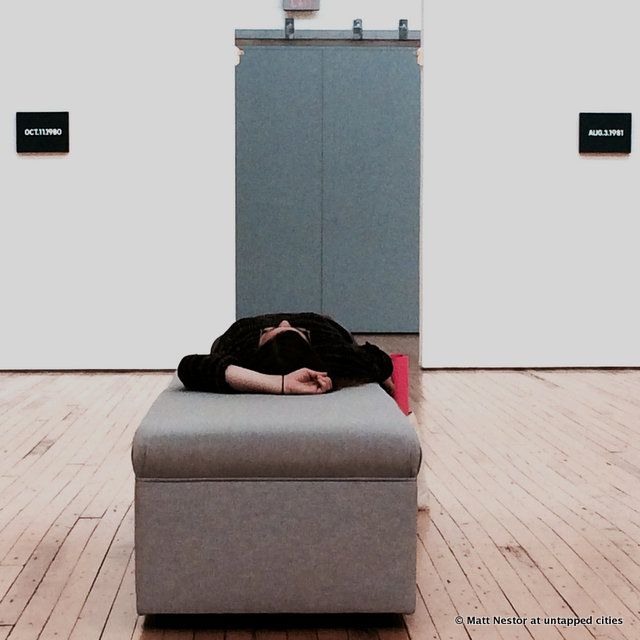
Relaxing near On Kawara’s Today series
New York City is so flush with museums and galleries that the art lover may well despair of catching every good exhibit. Perhaps the best defense against art show anxiety is simply skipping town altogether. A breezy eighty minutes on the Metro-North, along the broad grey Hudson and past the tremendous ruins of Bannerman Castle, takes you to Beacon, New York and the magnificent Dia: Beacon.
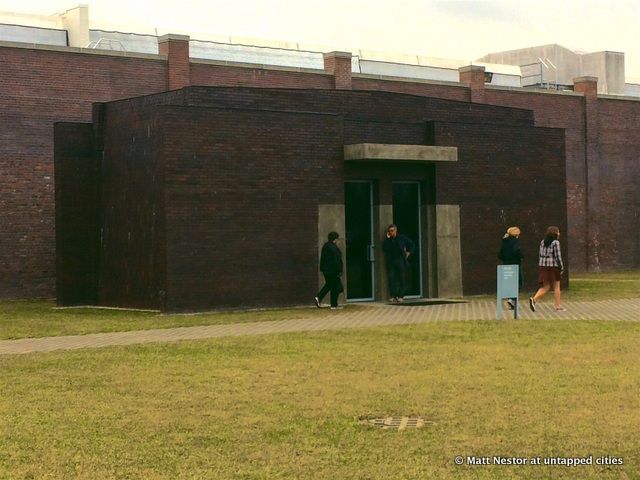
Dia: Beacon front entrance
A former box-printing factory, the Dia: Beacon building is not the world’s largest art museum—but it certainly feels like it. The hardwood floor boards, which still display the scuff marks of industrial use, run on and on through endless wide galleries; the sun peers in through numerous skylights. The experience of the art varies widely depending on the weather and cloud cover–there’s not a single light bulb in the whole gallery.
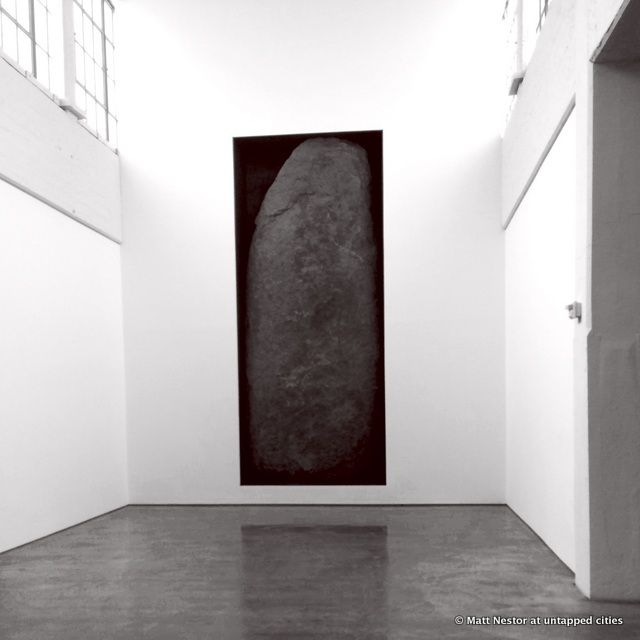
A piece by Michael Helzer
Every room in Dia is an object lesson in the use of space. The visitor comes to realize just how far he is from the catalog layout of the Met; each space here is dedicated to the work it contains. A monumental Serra piece is wedged into one of the smallest rooms in the building, narrowing the visitor’s passing space. Nearby, four large rooms are completely bare but for a few strategically strung pieces of yarn (by the artist Frederick Sandback). What would seem to be the last word in minimalism actually strikes the viewer as heavy and substantial: the viewer’s imagination fills in the spaces and planes delineated by the string.
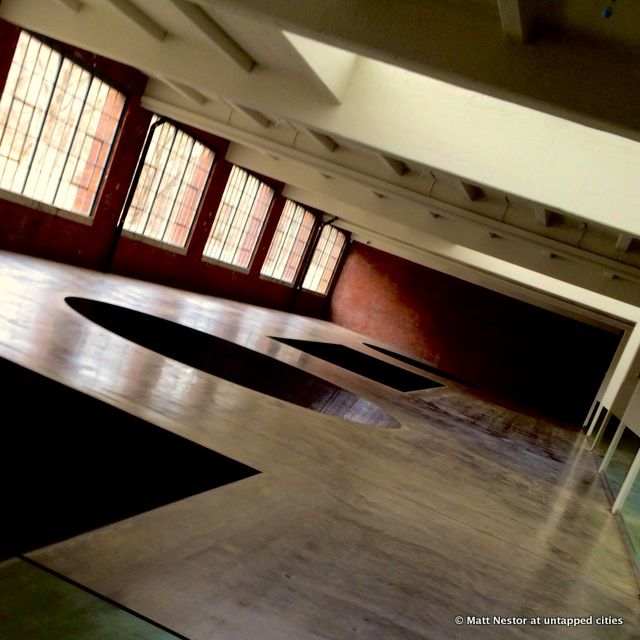
North, South, East, West 1 by Michael Helzer
Some of our favorites include the “negative” sculptures of Michael Helzer. The viewer, restrained by a glass barrier and unable to see the sculpture’s bottom, is eerily reminded of Poe’s The Pit and the Pendulum.
Another gem is the attic, where the phallic monstrosities of Louise Bourgeois puddle on the table or dangle from the ceiling. This Untapped writer, who once lived upstairs from Bourgeois’ studios and remembers the artist as an unpleasant old crone, revised his opinion of her as soon as he set foot in the attic: “unpleasant” doesn’t begin to do justice to the outrageous perversity of her mind.
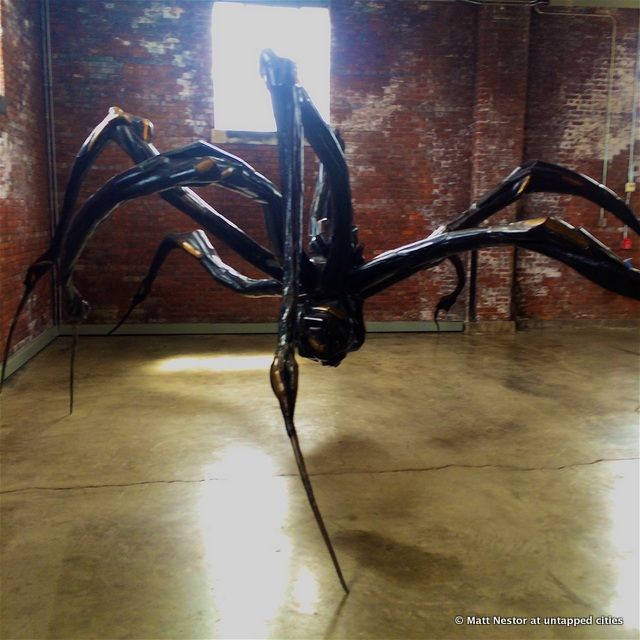
Not phallic for once, but certainly monstrous: Louise Bourgeois
The Dia Art Foundation was founded in 1974 with the express purpose of helping artists realize monumental works. They commissioned Walter De Maria’s incredible Lightening Field in 1977, as well as two of his works in NYC: The Broken Kilometer and the New York Earth Room. They are responsible for many works of public art in NYC and elsewhere, and hold the lease to that most famous of all monumental works, Spiral Jetty. The Beacon building, opened in 2003, is the perfect antidote to the overstuffed galleries of New York.
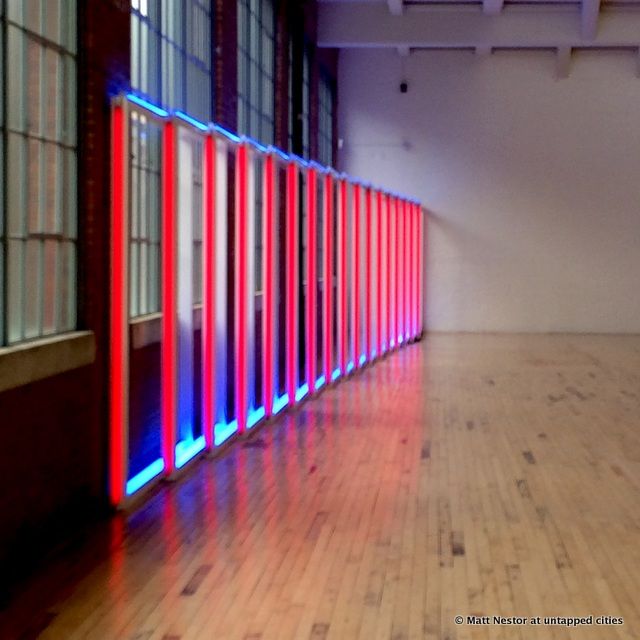
Dan Flavin
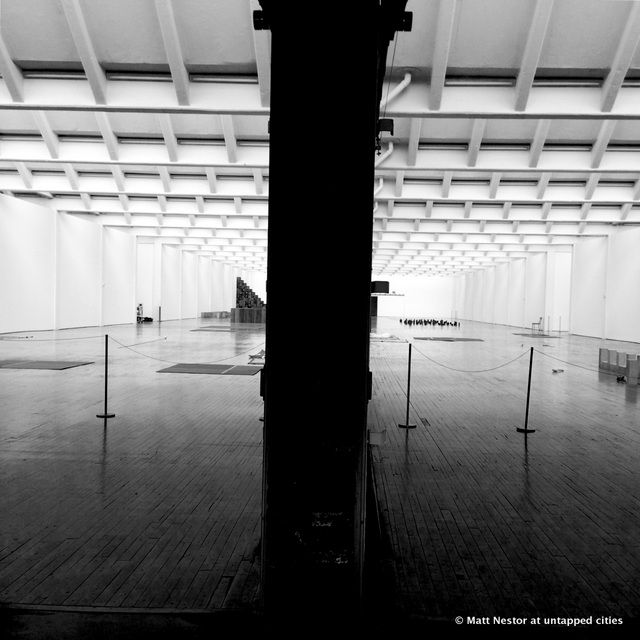
The choice confronting the visitor at the front door
Follow the author at @thedailyvirgin1 or visit his site, thedailyvirgin.net.
Subscribe to our newsletter